Konga: A definite grower
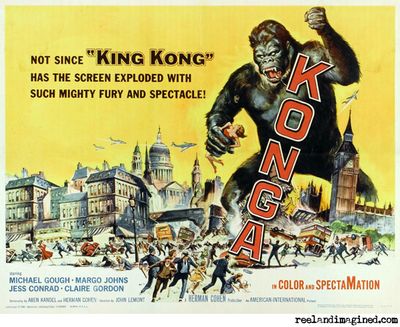
A light aircraft crashes in a Ugandan jungle, igniting in a ball of flame. It’s feared that its famous occupant, English botanist Doctor Charles Decker (Michael Gough), was killed in the explosion along with the pilot. One year later, however, a very-much-alive Decker returns to London, explaining that he’d managed to bail out of the plane before the crash, and had spent the past 12 months living with a native tribe while conducting experiments on insectivorous plants. His groundbreaking findings, he claims, will establish a close link between plant and animal life.
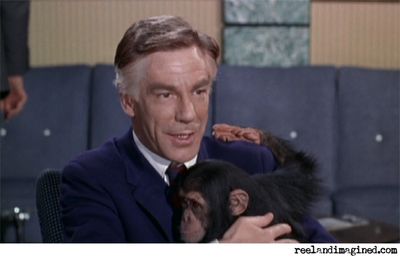
Downstairs in his laboratory, Decker cooks up a serum using extracts from these plants, along with some special seeds that invoke obedience. When this is injected into Konga, the chimp immediately doubles in size. After a second injection, the ape is as tall as a man, and Decker wastes no time in hypnotising him to do whatever and asks - and kill whoever the doctor wants dead.
Though sometimes thought of as a British take on King Kong, perhaps by those who’ve only seen the poster depicting a giant ape towering over London landmarks, Konga actually has more in common with ‘mad scientist’ films from the early years of horror, particularly WereWolf Of London (1935), which also begins with a well-to-do Englishman returning from foreign climes clutching a handful of exotic plants, the MacGuffin for much of what follows. There are obvious parallels, too, with another Universal horror, Murders In The Rue Morgue (1932), in which Erik the ape does his master’s murderous bidding.
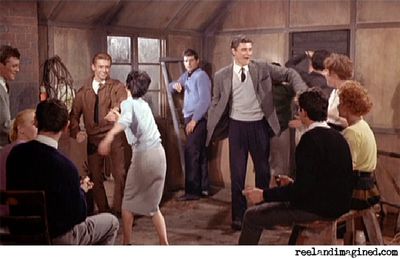
Of course, Konga’s plot is as delightfully daft as most low-budget sci-fi flicks that feature megalomaniacs cooking up stuff in laboratories. Decker’s desire to establish a new link between plant and animal life results in him turning a baby chimp into an overgrown killing machine, seemingly by design. He tells Margaret that his work will see him “dominate a corner of the Earth”, but to what ends is never explained. Neither are his hypnotic abilities, which are stuck on to the story with nothing more adhesive than spit and luck.
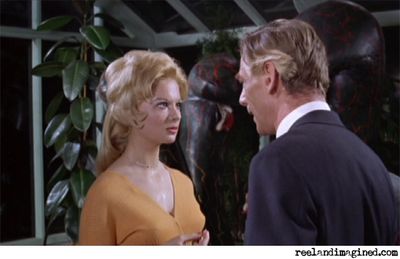
However, by this point it doesn’t really matter, as credibility has already been stretched beyond breaking point by an earlier scene in which Decker injects Konga with the serum a second time, and the chimp not only grows bigger but changes species. This, surely, is the real marvel of the process; not the accelerated growth. A chimp turns into a gorilla - think of the applications: species on the edge of extinction could be saved! But Decker, the selfish git, doesn’t notice, choosing instead to focus on making something bigger and harder, just for his own pleasure. That’s men for you.
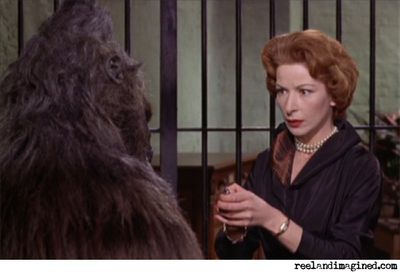
But, still, it’s hard not to think of her as ‘good old Margaret’. When the blinkers eventually fall from her eyes, 15 minutes before the end, she ensures that the film finally delivers on the promise of its poster, sending a truly giant ape off into the wilds of London to create panic and wreak havoc.
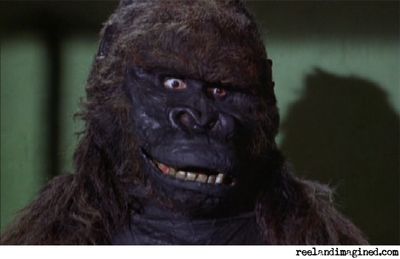
While the baggy-looking suit isn’t the best, the mask is memorable for all the right reasons, with its vicious-looking teeth and bright, staring eyes that just might haunt your dreams. Despite the film’s reputation for poor-quality effects, the ape cuts quite a figure on miniature sets (cheap-looking dolls doubling for actors notwithstanding), and enjoys some impressive compositing once loose on the streets.
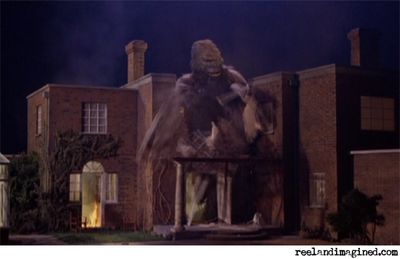
Eventually, after flinging Decker to the ground, the ape keels over, landing in the street below, where he changes back to his original form. As Big Ben tolls midnight, the crowd gather around a dead, and heartbreakingly innocent-looking, baby chimpanzee and his owner - a surprisingly affecting closing scene that makes you feel a bit guilty for picking holes in the preceding 90 minutes.
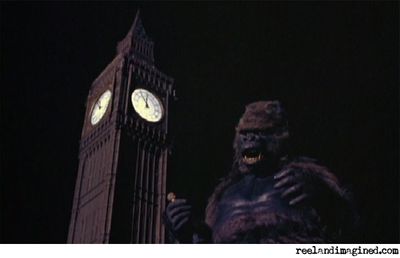
The direction is of variable quality and the acting, especially from the supporting cast, sometimes smells of balsa, but it’s a pacy film with an engaging lead. It’s relatively low on spectacle, but it never drags; there’s no interminable wait for the big ape to show up because Michael Gough’s Decker is so watchable.
As Konga is one of just two British forays into the giant-ape genre. and the other, Queen Kong (1976), is an outright spoof, it has the charm of an underdog. It’ll never win critical plaudits, but it’s easy to root for and difficult to dislike.
